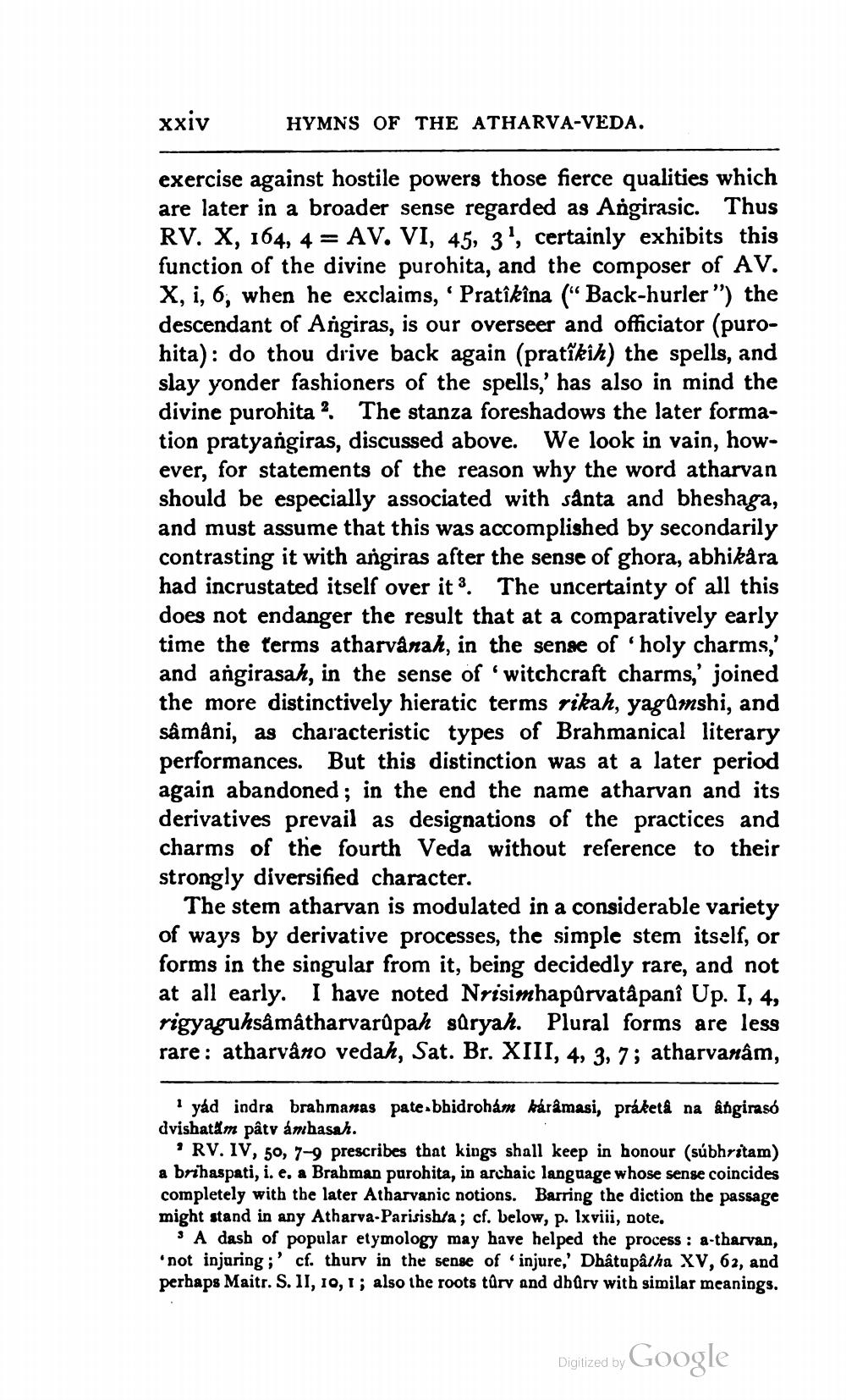________________
xxiv
HYMNS OF THE ATHARVA-VEDA.
exercise against hostile powers those fierce qualities which are later in a broader sense regarded as Angirasic. Thus RV. X, 164, 4 = AV. VI, 45, 3!, certainly exhibits this function of the divine purohita, and the composer of AV. X, 1, 6, when he exclaims, ' Pratîkîna (“Back-hurler") the descendant of Angiras, is our overseer and officiator (purohita): do thou drive back again (pratikih) the spells, and slay yonder fashioners of the spells,' has also in mind the divine purohita ? The stanza foreshadows the later formation pratyangiras, discussed above. We look in vain, however, for statements of the reason why the word atharvan should be especially associated with sånta and bheshaga, and must assume that this was accomplished by secondarily contrasting it with angiras after the sense of ghora, abhikara had incrustated itself over it 3. The uncertainty of all this does not endanger the result that at a comparatively early time the terms atharvânah, in the sense of holy charms,' and angirasah, in the sense of 'witchcraft charms, joined the more distinctively hieratic terms rikah, yagamshi, and sâmâni, as characteristic types of Brahmanical literary performances. But this distinction was at a later period again abandoned; in the end the name atharvan and its derivatives prevail as designations of the practices and charms of the fourth Veda without reference to their strongly diversified character.
The stem atharvan is modulated in a considerable variety of ways by derivative processes, the simple stem itself, or forms in the singular from it, being decidedly rare, and not at all early. I have noted Nrisimhapūrvatâpani Up. I, 4, rigyaguhsâmâtharvarúpah saryah. Plural forms are less rare: atharváno vedah, Sat. Br. XIII, 4, 3, 7; atharvanâm,
1 yad indra brahmanas pate.bhidrohám kárâmasi, práketå na angiraso dvishatam pâty ambasah.
IRV. IV, 50, 7-9 prescribes that kings shall keep in honour (súbhritam) a brihaspati, i. e, a Brahman purohita, in archaic language whose sense coincides completely with the later Atharvanic notions. Barring the diction the passage might stand in any Atharva-Parisishta; cf. below, p. Ixviii, note.
SA dash of popular etymology may have helped the process : a-tharvan, *not injaring;' cf. thurv in the sense of injure,' Dhâtupâtha XV, 62, and perhaps Maitr. S. II, 10,1; also the roots tûrv and dbary with similar meanings.
Digitized by Google




